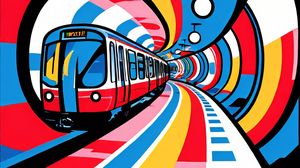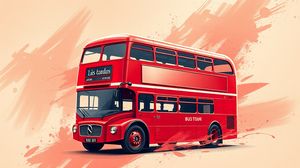
The London Underground, affectionately known as the Tube, is a rapid transit system that has become an iconic symbol of London, threading its way beneath the city's bustling streets.
Established in 1863 with the Metropolitan Railway, it holds the distinction of being the world's first underground passenger railway, marking a significant milestone in urban transport history.
The network now comprises 11 lines and over 270 stations, facilitating millions of journeys each day and connecting diverse corners of the city.
An intriguing aspect of the Tube is its disused stations, like Aldwych and Down Street, which whisper tales of the past and occasionally serve as unique filming locations.
The Tube's visual identity is celebrated worldwide, particularly the famous roundel logo and the schematic map designed by Harry Beck in 1931, both of which have become design icons.
Baker Street station is notable for its historical significance and distinctive decor that pays homage to Sherlock Holmes, offering a thematic experience for fans of the detective.
The Jubilee Line Extension features striking modern architecture at stations such as Westminster and Canary Wharf, showcasing impressive contemporary design and engineering.
Hampstead station holds the title of the deepest on the network, situated 58.5 metres below ground, accessible by lifts or a spiral staircase with over 320 steps.
The London Underground doubles as a subterranean gallery through the Art on the Underground programme, displaying a range of artworks that enhance the commuter experience.
Exploring the Tube offers not just a means of transport but a journey through time, architecture, and culture, making it an essential part of any visit to London.

Making the Most of Your Visit:
If you're travelling during rush hour, be prepared for busy trains and platforms. The peak times are 7:30-9:30 am and 4:30-6:30 pm on weekdays. It can be a bit hectic, so if you prefer a quieter journey, consider travelling outside these hours.
The Tube famously operates on contactless payments. If you have a contactless bank card or mobile payment set up, you can use it to tap in and out, avoiding the need to buy an Oyster card. Just remember to use the same card for both entry and exit to ensure correct fare calculation.
Make sure to stand on the right when using escalators in Tube stations, as the left is reserved for those who want to walk up or down. It's an unwritten rule, but one locals take seriously!
If you have a bit of time and a sense of adventure, explore some of the unusual disused stations by joining a guided tour. Some of these tours offer a fascinating peek into parts of the Tube network hidden away from the usual commuter routes, such as the famed Aldwych station.
For those with a love for art, keep your eyes peeled for the Art on the Underground installations. These artworks vary from murals to sculptures and can often be found brightening up your journey in unexpected places.

Visiting Times & Costs:
The Tube (London Underground) is a public transit system open year-round, providing an essential service connecting various parts of London. It generally operates from around 5:00 am to midnight, with some lines offering extended hours on Fridays and Saturdays for the Night Tube service. However, specific line opening and closing times can vary, so it's advisable to check for the latest schedules when planning a journey.
The cost of fares on the Tube varies depending on the zones you travel through, the time of day, and whether you're using an Oyster card, contactless payment, or a paper ticket. Below is a simplified cost overview:
| Ticket Type | Indicative Fares* |
| Contactless/Oyster Card (Zone 1-2) | £2.80 (off-peak), £3.40 (peak) |
| Paper Ticket (Zone 1-2) | About £6.50 |
| Travelcard (1 Day, Zones 1-2) | £15.20 (Anytime) |
*These fares are indicative and subject to change. It's best to check the Transport for London website or when purchasing for the most accurate fare information.
In terms of accessibility, many Tube stations now offer step-free access between the street and platforms, but not all stations are fully accessible. It's advisable for those with mobility requirements to plan their routes in advance using accessible Tube maps and resources.
Remember to always check for scheduled maintenance or updates that may affect accessibility and service availability on the network.

Address & Map:

Nearby:























